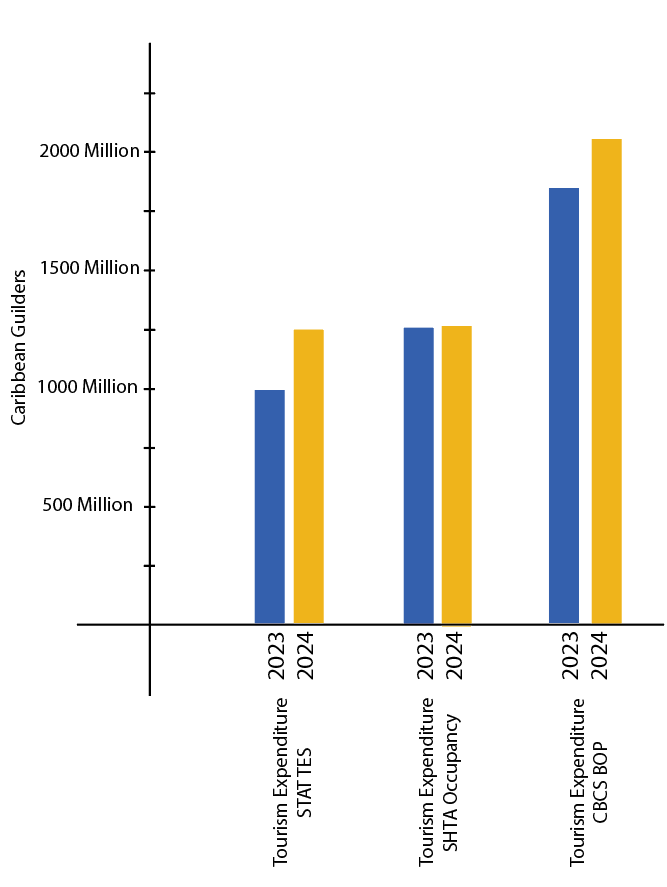There are two publicly available reports on Tourism Expenditure.
The first one is the TES reports on Average Daily Expenditure (ADE) and arrivals on a yearly basis. The latest report available is 2023.
When applying the methodology for both cruise and stayover 2024 can be calculated.
Visitors x Length of stay x ADE = expenditure The second one is reported by the Central Bank of Curaçao and Sint Maarten (CBCS), in their quarterly reporting on the balance of payments (BOP) as the line item “travel exports”
The CBCS has indicated being reliant on STAT for this figure, and the methodology is the same.
The SHTA, by using country budget and TES data on expenditure and travel party size as well as occupancy figures, has been able to create a third somewhat independent value for total tourism expenditure on the Dutch Side. According to the TES, visitors spend 55 to 60 percent of their expenditure on accommodations. So expenditure can be calculated from accommodation revenue. The graph below shows the different sets.

The CBCS reports a significantly higher figure for Tourism Expenditure / Travel Exports than any of the survey or occupancy data can justify.
In two previous articles, the St. Maarten Hospitality & Trade Association (SHTA) has taken a look at available facts regarding independent vacation rentals and performance of the tourism industry. Of the data presented as stayover visitors only 72% appear to be staying in accommodations on the Dutch Side of Sint Maarten and 55% appear to be staying in Dutch Side hotels and resorts. According to SHTA estimates, this leads to the conclusion that travel exports by the CBCS are overreported by 800 Million XCG. This amounts to roughly 18 thousand XCG per resident. That is a significant amount of production that is not occurring.
If that 800 million is not produced, that means less jobs, less income, less funds for investments, less taxes and social security fees. In short it means a lot less economic activity.
The private sector relies on authorities to produce accurate and timely statistics. It is impossible to run a company if you don’t know what your revenue is; the same counts on a country level. With the current large differences in economic output statistics, it is seemingly impossible to design befitting economic policies like tax and social security reform.
